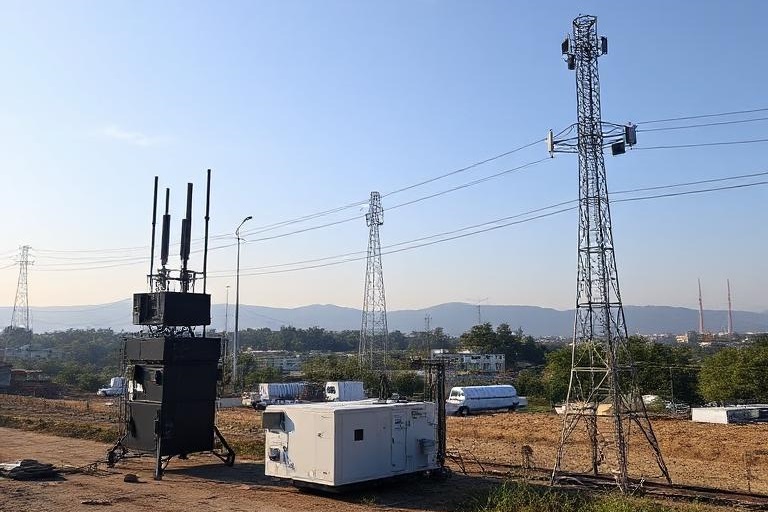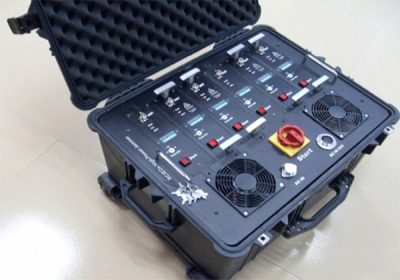In an age where wireless communications dominate everything from surveillance systems to smart homes, noise-based signal jammers are evolving from blunt instruments to strategic tools for privacy protection and electronic defense. This guide explores how modern EMI devices work, what kinds of technology there are, and why certain noise blocking device techniques remain highly useful and effective today.
What are noise jammer? The science of chaos control
A noise signal blocker is essentially an electronic countermeasure tool that emits intentional electromagnetic interference to block, disrupt, or disable wireless communications. Unlike passive shielding, this is a form of active jamming that aims to fundamentally disrupt signal integrity.
The physics behind it is rooted in electromagnetic wave superposition: When a powerful, chaotic signal overlaps with a legitimate signal of the same frequency, the receiver becomes overloaded and cannot distinguish the original information. The result? Signal loss, even if the source is still powered.
Three types of noise RF jammers (and how they differ)
1. Broadband blockers – blunt force attack
Broadband signal jammers are often called the “shotgun attack” of signal jamming, flooding a variety of frequencies simultaneously. Their philosophy is: jam everything and hope the target is jammed into the noise.
Use case: high traffic environments where multiple frequencies need to be muted without identifying individual frequencies – such as blocking cell phones, Bluetooth or Wi-Fi at the same time in a sensitive meeting.
✅ Pros:
- Wide coverage
- No prior knowledge of target frequencies required – good for multi-device jamming scenarios
- Effective in cluttered RF environments
❌ Cons:
- Energy waste on irrelevant bands
- Short effective range unless powerful
- High collateral interference – may inadvertently disrupt legitimate wireless services
2. Narrowband Jamming Devices – Precision Jammers
Unlike broadband models, narrowband signal jammers focus all their energy on a specific target frequency, achieving disruption with minimal power.
Example: A 2W narrowband jammer targeting a surveillance microphone may outperform a 10W broadband unit in real-world jamming.
✅Pros:
- Minimal side effects on non-target systems
- Efficient energy use and longer range
❌Cons:
- You must know the target’s operating frequency ahead of time—not ideal for unknown or frequency-hopping systems.
3. Electromagnetic Interference (EMI) Scramblers—Analog Kill Switches
Low-frequency magnetic suppressors are often overlooked in mainstream discussions, but they are powerful tools for audio blocking and hardware sabotage.
Use cases include:
- Interfere with target microphones, speakers, and even distort visuals on CRT monitors (though ineffective on modern LCDs)
⚠️ These don’t rely on traditional radio wave jamming—they physically damage hardware, making it harder to detect or track.
Summary
As an important tool for information protection, radio jammer have many types and application scenarios:
Comparison chart of different types of radio jammers
| Feature / Type | Wideband Jammer | Narrowband Jammer | Low-Frequency Electromagnetic Jammer |
|---|---|---|---|
| Interference Frequency Range | Very broad (tens of MHz to several GHz) | Very narrow (single frequency or small band) | Low frequency (10Hz–1000Hz) |
| Energy Efficiency | Very low (spread out) | Very high (focused) | Low (but effective on specific devices) |
| Interference Intensity | Moderate (requires high power) | Very strong (even with low power) | Low to moderate (depends on device) |
| Impact on Surrounding Devices | High (affects radio, mobile, WiFi, etc.) | Low (targets specific frequencies) | Very low (mainly affects speakers/CRT screens) |
| Best Use Case | Unknown frequencies, emergency shielding | Precise protection, targeted attacks | Disabling microphones, old speakers/TVs |
| Advantages | Flexible use, quick response | Precise jamming, energy efficient | Strong penetration, highly covert |
| Disadvantages | Power waste, large side effects | Requires knowledge of target frequency, more complex design | Limited compatibility, needs high power |
| Typical Applications | Preventing wireless eavesdropping, emergency communication blackout | Securing meetings, anti-surveillance | Jamming bugs, disrupting CRT monitors |
Conclusion: Smarter Jamming Starts with Choice
Today’s radio blocking devices are no longer cookie-cutter tools. By understanding their unique characteristics—from wideband RF scanners to specialized magnetic field transmitters—you can tailor a solution to maximize protection while minimizing interference. Whether you’re protecting privacy or assets, the right jammer is a strategic control investment.



